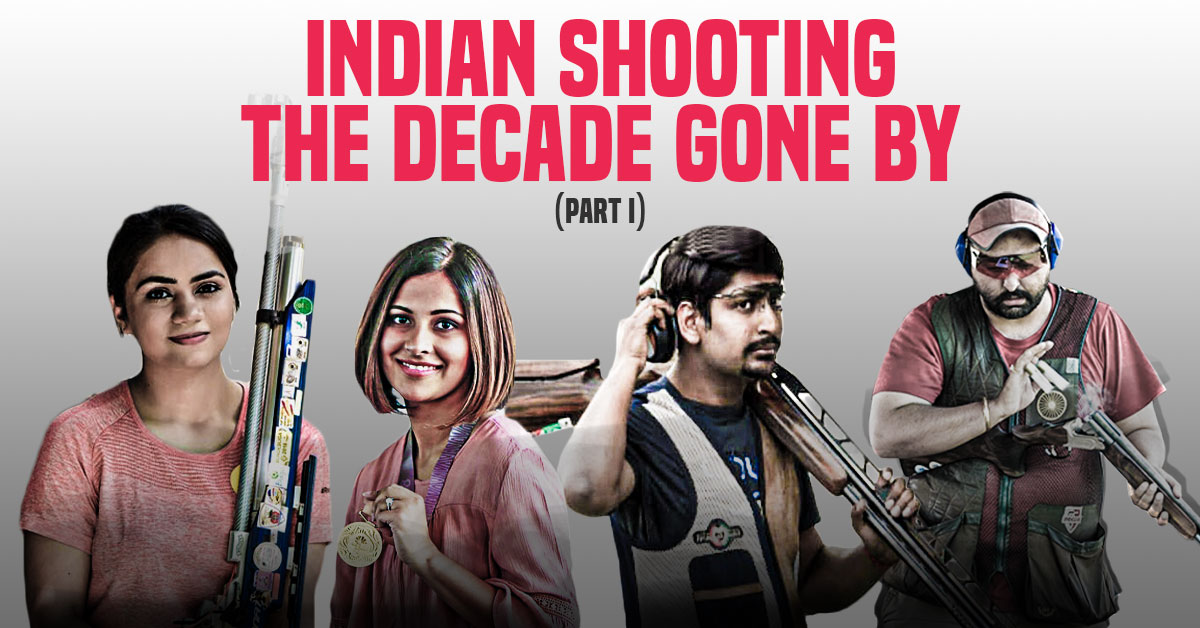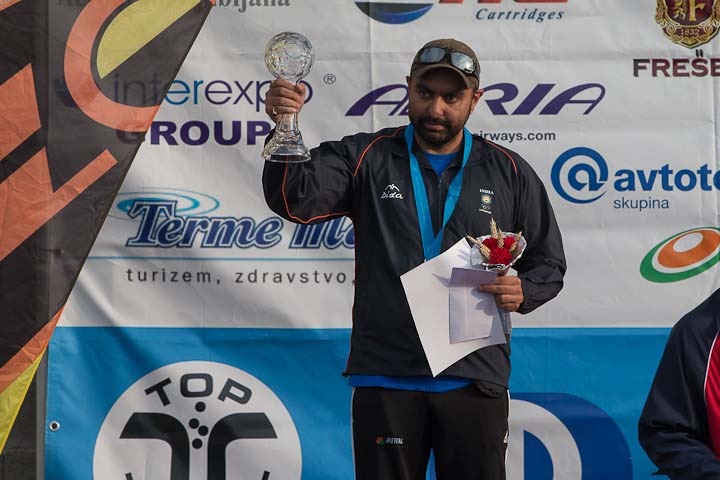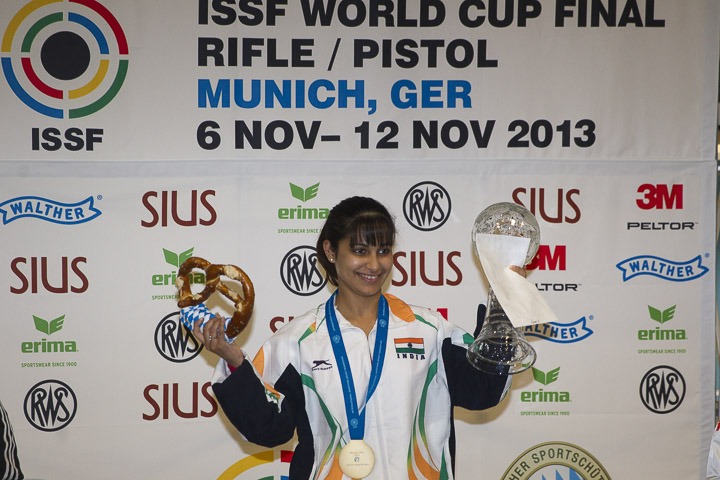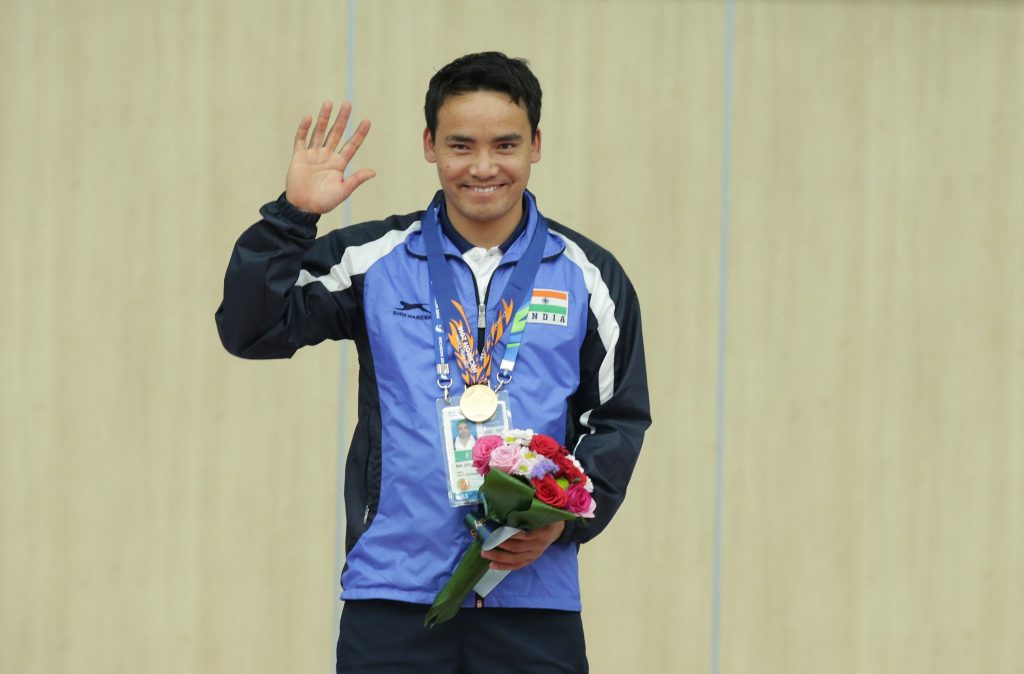Featured
The Evolution of Indian Shooting – The Decade Gone By (Part 1)

The decade gone by has seen a lot of ups and downs in Indian shooting.
It started with Abhinav Bindra as the reigning Olympic and World Champion in one of the most competitive events in all of shooting, and has ended with India topping the medals tally at all the World Cup events of 2019. But between those achievements, many shooters have come and gone, shone brightly before fading away. And while some experienced hands continue to make their mark, the sport today seems firmly in the hands of the new generation.
The table below shows how India has progressed through the decade on the world stage:
| | Medals at ISSF Events* | |||
| Gold | Silver | Bronze | Total | |
| 2010 | 3 | 4 | 2 | 9 |
| 2011 | 2 | 3 | 2 | 7 |
| 2012 | 0 | 1 | 0 | 1 |
| 2013 | 2 | 1 | 1 | 4 |
| 2014 | 2 | 4 | 1 | 7 |
| 2015 | 0 | 1 | 5 | 6 |
| 2016 | 1 | 4 | 0 | 5 |
| 2017 | 3 | 0 | 2 | 5 |
| 2018 | 4 | 2 | 5 | 11 |
| 2019 | 19 | 4 | 2 | 25 |
| Total | 36 | 24 | 20 | 80 |
* Includes World Championships, World Cups and World Cup Finals in senior Olympic disciplines only. In 2017, mixed team events had already been declared as Olympic disciplines but were held in some World Cups as “test events” only. These “test event” medals HAVE been included.
One look at the above table ensures that 2019 just jumps off the page, but let’s explore how we got here.
2010-2012
Indian shooting entered the London Olympics qualification cycle in reasonably good health. Abhinav Bindra, having already etched his name in the history books, was looking to further build on his successes.
Gagan Narang had a point to prove having been surpassed by his friend and rival, Manavjit Sandhu, was looking to replicate his Asian successes on the world stage just like he did by winning the World Championship in 2006, and a young hope had rapidly risen through the ranks in Ronjan Sodhi.
However, Rajyavardhan Rathore seemed to be on his last legs, while women’s shooting was struggling a bit with Anjali Bhagwat and Suma Shirur well past their best.

Ronjan was the undisputed best Indian shooter during this period, winning a total of six major ISSF medals in the double trap event from 2010-2012, including three Golds, besides the Commonwealth Games Silver and the Asian Games Gold. However, in one of the most heartbreaking moments of Indian shooting, he came up short at the London Olympics missing 4 out of his last 6 birds to miss out on the finals. And while Ronjan did manage to win Silver at the 2012 World Cup Final after London, he never truly recovered from his shock Olympics and was soon out of the Indian team altogether.
Gagan Narang strut his stuff as well, securing his Olympic quota at the very first opportunity with a Bronze at the 2010 World Championships. He then managed just one more medal in the World Cup season, but was routinely in the finals and in touching distance of the medals before realizing his dream at London. Abhinav Bindra, however, was unable to replicate his big successes from 2006 and 2008.

As can be seen from the medals table, India won a number of other medals during the 2010 and 2011 World Cup seasons through multiple shooters, with Sanjeev Rajput winning a World Cup medal each in two different events and many other shooters winning a solitary World Cup medal like Vijay Kumar, Joydeep Karmakar, Rahi Sarnobat and Manavjit Sandhu. Thus, it was fitting when this crop of inconsistent but capable shooters got represented in London by Vijay Kumar’s brilliant Silver.
As a result, India ended the Olympic cycle upbeat, having doubled their previous medal tally from Beijing. Wrestling, and especially shooting, each having secured 2 medals, got earmarked for even bigger things at Rio 2016, with every stakeholder from pundits to administrators to athletes to fans wasting no time in predicting and aiming for double-digit (or even higher) medal tallies in four years time.
2013-2016
The new Olympic cycle saw a major change in the sport of shooting. Inspired by the success of the men’s rapid fire event, the ISSF decided that all finals would henceforth start with all shooters at zero. Thus, topping the qualification now provided no advantage in the finals, which thus became even more unpredictable and exciting affairs.

The post-Olympic year is generally a year that sees slightly unique results. Many of the top guns, in India as well as around the world, are either taking a break from the sport altogether or are looking to try out new things rather than worrying about the results. Thus, any inferences made from performances in 2013 should always be made with a grain of salt. Still, the year saw Heena Sidhu shoot herself to fame with a World Cup Final Gold and a World No. 1 ranking, giving Indian women’s shooting a much-needed fillip.
This Olympic cycle also saw some major changes in personnel. Gagan Narang, slowly but surely, transitioned his pet event from 10m Air Rifle to 50m Rifle Prone on account of an ankle injury. While he continued to shoot 3 events (with 50m Rifle 3 Positions being his 3rd event), there was no doubt as to where his prime focus lay.
Double Trap saw new faces in Mohammed Asab and Ankur Mittal with Rajyavardhan Rathore and Ronjan Sodhi no longer truly in the picture. Vijay Kumar, despite receiving all the support possible from the army, was unable to qualify for the Rio Olympics, having been overtaken by Gurpreet Singh. And Abhinav Bindra was struggling with injury niggles as well as motivation, once famously announcing on social media that he would henceforth continue on only as a “hobby shooter” as opposed to a professional shooter, before soon changing his mind.

But this cycle was dominated by just 1 man – Jitu Rai. The army man arrived with a bang in 2014, was highly proficient in 2 events (10m Air Pistol and 50m Pistol), was known for his nerveless prowess in finals, and accounted for 8 out of the 18 ISSF medals won by India from 2014 to 2016, besides of course winning Gold at both the Commonwealth Games and the Asian Games!
Unfortunately though, with enormous hopes of a nation pinned on him, his career ended up closely mirroring Ronjan Sodhi. In Rio, he reached the 10m final but ended up last after a rare bad start, and missed out on the final of the 50m event with a disastrous sequence of 8, 8, 9, 7, 10 in his last 5 shots in highly windy conditions. And while he continued to win accolades in 2017, just like Ronjan before him, he was soon out of the Indian team altogether.
This cycle also saw promise from some other shooters. Apurvi Chandela had her breakthrough with a Bronze at the 2015 Changwon World Cup and followed it up with Silver at the World Cup Final. Manavjit was still Manavjit, inconsistent but highly capable and added a couple more medals to his kitty. And Mairaj Ahmad Khan not only became India’s first Olympic participant in skeet since 1984, but was also India’s best shooter in Rio behind only the incomparable and rejuvenated Abhinav Bindra.
But, on the whole, outside of Jitu Rai, the years 2014 and 2015 saw a drop in Indian performance at ISSF events as compared to 2010 and 2011. And this, combined with some significant bad luck, showed at Rio as the Indian shooting contingent came up empty despite high hopes and incredible hype.
Part 2 of this article, to be published later, will look at the progress and recovery undertaken in the current Olympic cycle, after the debacle of Rio.






